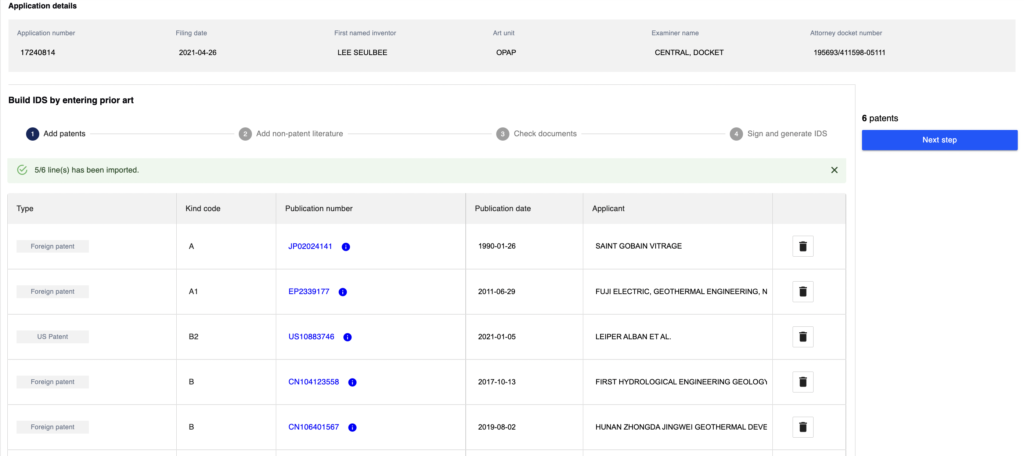
In the US prosecution, the applicant has the responsibility to disclose to the examiner any known prior art that may affect patentability of its application. USPTO requires the applicant to be of complete good faith and to be transparent. This disclosure shall be made in writing by filing a specific form SB08 listing all known US patents, US patent application, foreign patents and Non-patent literature.
Failure to disclose a known prior art may result in your patent being unenforceable or – if your good faith is doubted by the USPTO – considered as fraudulent.
On the contrary, if the disclosed prior art has been considered by the examiner and the patent has been granted, a third party will not be able to state said prior art as a valid ground for reexamination.
It’s therefore a good idea to include a little more than you would think is necessary while avoiding the temptation of listing too much reference.
Indeed, listing way too much prior art may also be considered as a fraudulent way to bury important references within a huge list of vaguely related prior arts. There is no specific rules against it but who would want to angry an examiner before he even starts to work on your case?
Please note that you are required to disclose known prior art BUT you are not required to do any prior search specifically for this purpose. In the event you did perform a prior art search, you are however required to list relevant found results.
So when is the good time to file an IDS?
There is 4 periods to consider:
(1) A first IDS within three months of the filing of a national application, or the entry of the national stage or before the mailing of a first Office Action whichever is the later or after filing an RCE before the mailing of a first Office Action
An IDS within one of these periods requires neither a fee nor a statement under 37 CFR 1.97(e).
(2) After (1) but before final action, notice of allowance or Quayle action
An IDS filed in this period must be accompanied by either a statement as specified in 37 CFR 1.97(e) (stating that you became aware of this prior art no longer than 3 months ago); OR the fee set forth in 37 CFR 1.17(p).
(3) After (2) but before (or with) payment of issue fee
An IDS filed in this period must be accompanied by both a statement as specified in 37 CFR 1.97(e) (stating that you became aware of this prior art no longer than 3 months ago); AND the fee set forth in 37 CFR 1.17(p).
(4) It would be still possible to file an IDS after (3). You would need to withdraw the patent from issue using the QPIDS program https://www.uspto.gov/patents/initiatives/quick-path-information-disclosure-statement-qpids and by filing an RCE. If the examiner determines that there is no need to reopen prosecution, the USPTO will issue a corrected notice of allowability (and reimburse the RCE fee). If not, you’re on for an additional round.
How many IDS should I file?
As many as necessary. As long as you continue to be aware of additional prior art that may affect the patentability (novelty or inventiveness) of your patent, you have 3 months to disclose it to the USPTO by filing a supplemental IDS.
This is the case when you protect your invention in several countries and that you receive office actions from abroad. Any cited prior art cited from foreign offices should be disclosed within 3 months. This IDS family reference check (known as « cross-reference ») might be automated for increased efficiency. Check our productivity tools : https://www.ipst.at/ids/
This cross reference check is vital for the solidity of your patent since it would be the first thing that a competitor would look if he would try to break down your patent. You would have a hard time proving that in good faith you didn’t knew about this additional prior art when another office send you an explicit letter about it.